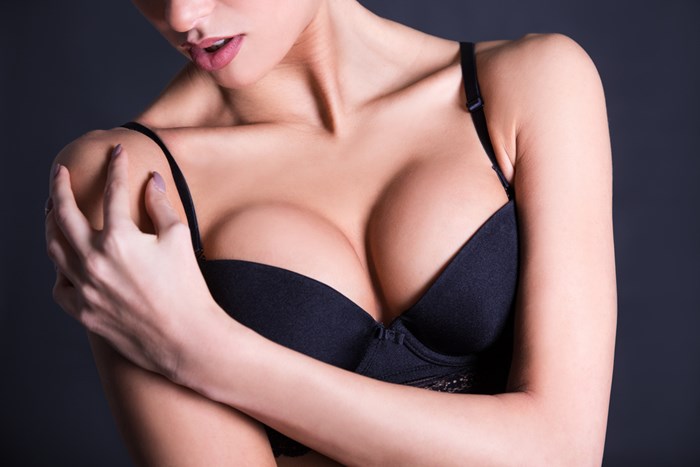The idea of the Perfect Breasts in Dubai is a combination of aesthetics, harmony, and proportion rather than a single, universal measurement. While cultural preferences and individual tastes vary, there are certain proportions often associated with attractiveness and balance. These proportions aim to enhance the body’s natural symmetry, complementing the chest, shoulders, and waistline. Rather than focusing solely on size, the ideal breast proportion takes into account the overall silhouette, the relationship between the upper and lower poles, nipple positioning, and how naturally the breast integrates with the torso.
Balance Between Upper and Lower Pole Fullness:
One of the primary markers of ideal breast proportions is the distribution of fullness between the upper and lower poles of the breast. What does the beautiful woman’s chest look like (كيف يبدو الثدي المثالي), The “upper pole” refers to the area above the nipple, while the “lower pole” is the area below. A proportion often considered aesthetically pleasing is about 45% fullness in the upper pole and 55% in the lower pole. This ratio creates a natural slope from the collarbone down to the nipple, followed by a gentle curve toward the breast base. Too much upper pole fullness can appear unnatural, while too much lower pole fullness can cause sagging over time. Achieving this balance gives the breast a youthful and proportional appearance.
Nipple Position and Projection:
The position and projection of the nipple play a vital role in ideal breast proportions. In balanced breasts, the nipple generally sits at or slightly above the midpoint of the breast mound when viewed from the front. The nipple-to-inframammary fold distance (the crease under the breast) is often around 5 to 6 centimeters in proportionate breasts, but this can vary with body size. Projection—the distance the breast extends outward from the chest wall—should be in harmony with the width of the breast and torso. Too little projection can make the breast appear flat, while excessive projection can look disproportionate. Ideally, nipples face slightly forward with a natural, gentle upward tilt.
Symmetry Without Uniformity:
While perfect symmetry is rare in nature, the ideal breast proportion often aims for close similarity between both breasts. However, a completely identical look is neither realistic nor necessary for beauty. Slight natural differences can add character and authenticity. The key is that both breasts align proportionally with the body, maintaining a balanced appearance in terms of volume, height, and projection. This harmony is more important than mathematical perfection. Achieving a near-symmetrical proportion also ensures that clothing fits comfortably and that the body looks balanced in various postures and movements.
Proportion to Shoulder and Waist Width:
The breasts should be proportional not just within themselves but also in relation to the entire torso. A well-proportioned bust complements the shoulder width and waistline, creating an hourglass or balanced silhouette. For example, on a narrow-shouldered person, overly wide breasts can appear disproportionate, while on someone with broader shoulders, too-small breasts may seem out of balance. This proportionality is often described using the “golden ratio” principle in aesthetics, which seeks harmony between all body parts. When breasts fit naturally within this frame, the result is a look that enhances posture, confidence, and overall visual balance.
Cleavage and Breast Spacing:
Cleavage—the area between the breasts—is another factor contributing to the perception of ideal proportions. Naturally proportionate breasts tend to have moderate spacing, allowing for a soft inward curve toward the sternum without looking too close-set or too far apart. The ideal spacing is influenced by the width of the chest and the base of each breast. Proper proportion in this area allows for versatility in clothing choices, from deep V-necks to strapless designs. Too much spacing can reduce the appearance of fullness, while overly close-set breasts may appear unnatural for certain body frames.
Skin Quality and Breast Contour:
Beyond size and position, skin quality and contour play a large role in how ideal proportions are perceived. Firm, elastic skin supports the breast’s shape, maintains smooth contours, and prevents premature sagging. The contour should feature a gentle slope from the chest wall to the nipple, with no sharp transitions or irregularities. Healthy skin tone, even pigmentation, and minimal stretch marks also contribute to an aesthetically pleasing proportion. Good skin quality works together with structural balance to create the perception of youthful, well-proportioned breasts.
The Role of Personal Preference and Cultural: Influence
While there are widely accepted guidelines for ideal breast proportions, personal preference and cultural factors strongly influence what is considered “perfect.” Some may prefer a fuller upper pole, while others value a softer, more natural slope. Cultural trends, fashion styles, and individual experiences shape these ideals over time. The true “perfect” breast is one that aligns with the wearer’s self-image, comfort, and lifestyle. Proportion is best achieved when it not only meets visual standards but also resonates with the individual’s sense of identity and confidence.
Conclusion:
The most beautiful Perfect Breasts (أجمل صدر امرأة) in terms of ideal proportions is less about meeting rigid measurements and more about achieving balance, harmony, and personal satisfaction. By considering elements such as upper-to-lower pole fullness, nipple position, projection, symmetry, torso proportion, cleavage spacing, and skin quality, one can define proportions that feel natural and aesthetically pleasing. Ultimately, the ideal is highly individual, and the most beautiful proportion is one that makes the person feel confident, comfortable, and authentically themselves.






0 Comments